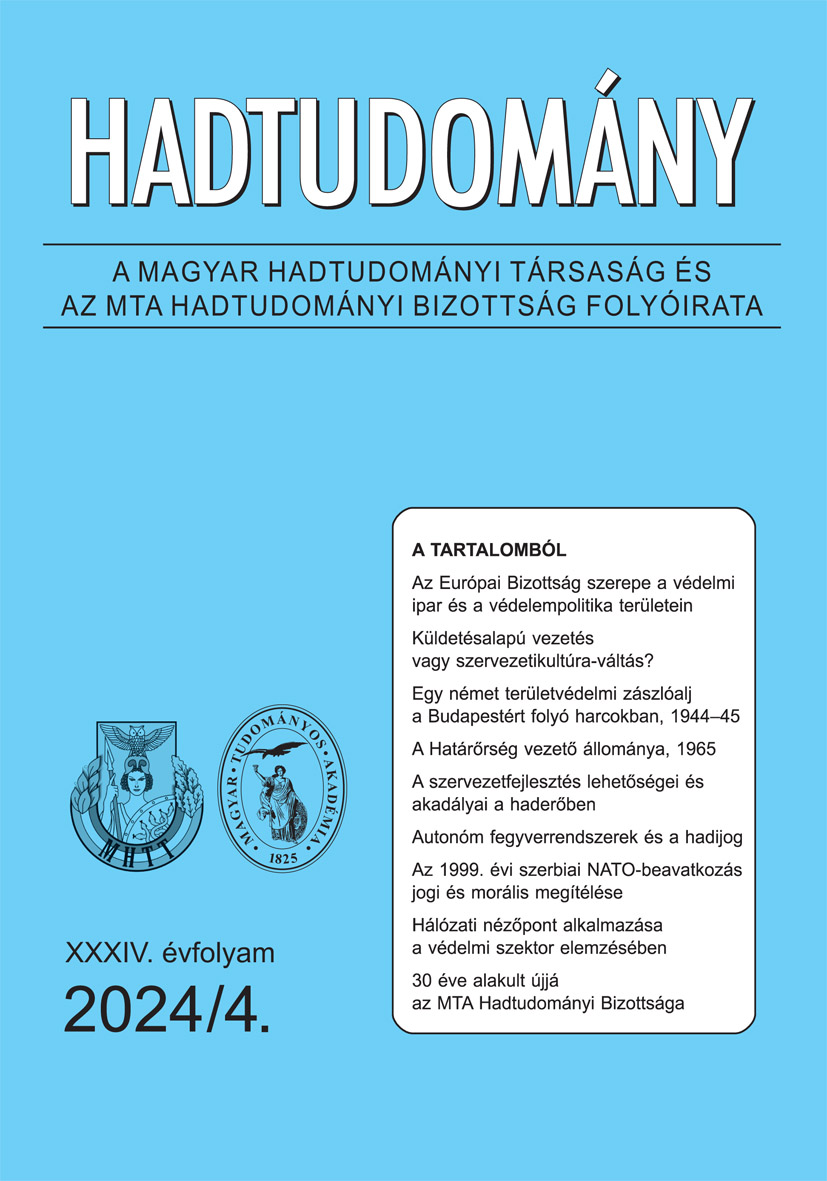Mission Command vs. Cultural Change
Abstract
The warfare of the 21st century proved even more that, thanks to technical progress, quick and immediate decisions are needed in order to achieve military goals. Not only at higher level of command (strategic, operational level), but also at the level of subordinates (tactical level), there is a need for commanders, leaders who are aware of the higher command’s goal even with a strategic goal, and are able to make immediate decisions in order to succeed the mission. Nowadays, there is no time to wait for decisions from superiors in front of an unforeseen obstacle, thus losing the initiative. However, this approach presupposes a high degree of trust, freedom of decision, movement and professional knowledge. In the current military culture, mission command is not yet widespread, as it requires a change of attitude compared to the rigid culture, which should be mastered during military education.
References
Dempsey, Martin E. 2012. Mission Command. Washington, DC: U.S. Joint Chiefs of Staff, April 3, 2012.
Galvin, Thomas P. 2017. “A Primer on Organizational Communication Campaigning,” Faculty Paper Carlisle Barracks, PA: U. S. Army War College.
Kotter, John P. 1996. “Transforming Organizations: Why Firms Fail,” and “Successful Change and the Force That Drives It.” In Leading Change. Boston: Harvard Business Scholl Press.
Orosz Lajos 2012. A szervezeti kultúra fejlesztése és alakítása. Tréning háttéranyag. Közigazgatási Vezetõi Akadémia. https://nkerepo.uni-nke.hu/xmlui/bitstream/handle/123456789/100195/49.pdf;jsessionid=664C1773DD4D613B074EF84FE9E0C9C2?sequence=1
Sásik Csaba 2020. A szervezeti kultúra fejlesztésének szerepe a haderõ modernizációjában. Hadtudományi Szemle, 2020/2. 5–11. http://real.mtak.hu/107513/1/39-Kezirat-163-1-10-20200312.pdf
Stewart, Keith G. 2009. “The Evolution of Command Approach (Paper 192)” Defence Research and Development, Canada, Toronto.
U. S. Department of the Army, Mission Command, ADP 6-0 Washington, DC: U.S. Department of the Army, May 2012, includes Change 2, March 12, 2014.




